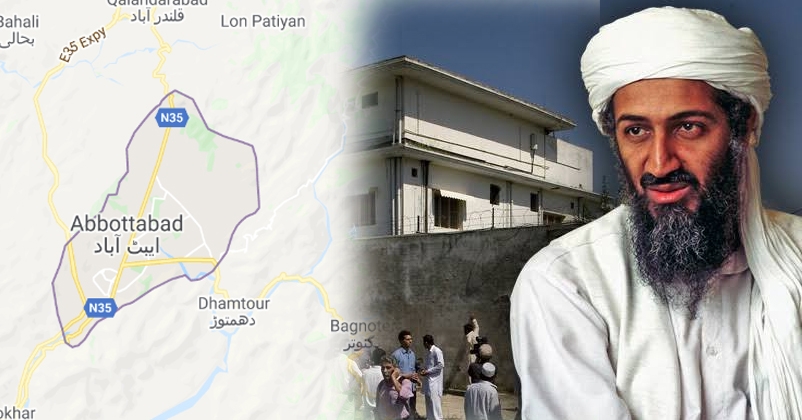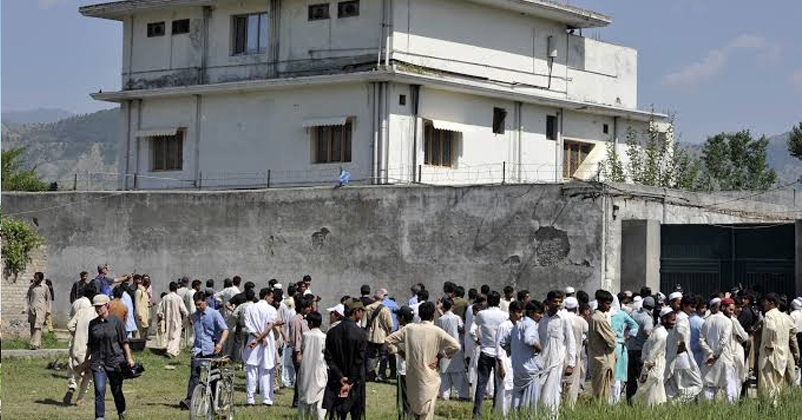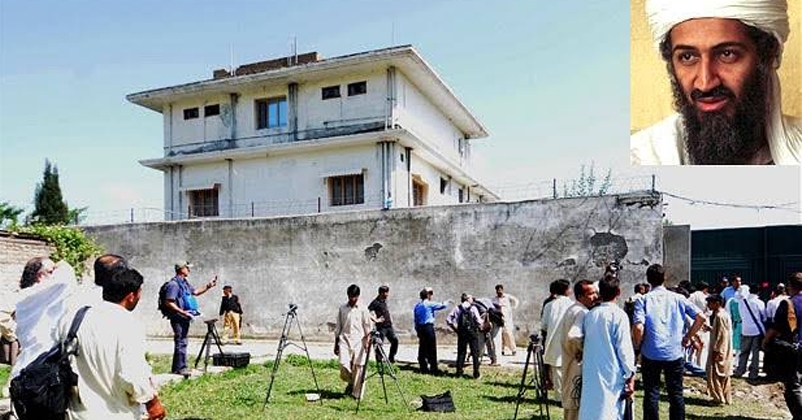Abbottabad, the terror-dominant city where the world's most-wanted Laden was hunted down, but that also borne legend Manoj Kumar
02 May 2020 23:02:24

It has been nine years since Al Qaida Chief Osama bin Laden, the mastermind behind the 9/11 attacks was killed in an operation led by the United States. The operation carried out by US commandos, American military and CIA operatives traced Osama’s hideout in the Pakistani town Abbottabad in 2011 and hunted him down. Bin Laden was killed on May 2, 2011, not in the wilderness but rather in the city of Abbottabad, about an hour’s drive north of the capital of Islamabad.
In worst of its kind terror attacks, on Sept 11, 2011, two hijacked planes first attacked and then collapsed Twin towers to the ground causing mass destruction and killing thousands of Americans. The deadly attack was carried out by Osama bin Laden led Al Qaida.
On May 2, 2011, the US conducted an operation that killed Osama, a terrorist who was responsible for the murder of thousands of innocent men, women, and children in 9/11. A group of US Navy Seals assassinated Osama in a night raid on a high-walled compound in Abbottabad, Pakistan, following which the White House declared the world’s most wanted terrorist Osama bin Laden dead. President Obama announced the death in a televised address to the nation from Washington, where it was still late on the night of May 1. "Justice has been done,'' he declared. However, behind the raid that killed Bin Laden laid years of intelligence work.

On the day Laden was killed, US commandos first reached the top floor, entered a room and saw Osama bin Laden with an AK-47 and a Makarov pistol in arm’s reach. They shot and killed him, as well as wounding a woman with him. And just like that, history’s most expansive, expensive and exasperating manhunt was over. The inert frame of Bin Laden, America’s enemy No. 1, was placed in a helicopter for burial at sea, never to be seen or feared again.
However, before the then US President Obama addressed the world to announce that the United States had killed Osama bin Laden, the leader of Al Qaeda, the US made efforts to disrupt, dismantle and defeat his terror network but all in vain. While the United States had been trying to kill or capture Bin Laden since it launched an invasion of Afghanistan in November 2001, the most wanted terrorist Laden not only avoided capture for years but also escaped across the Afghan border into Pakistan. The deadliest terror group Al Qaeda continued to operate from along that border and operate through its affiliates across the world.
Osama bin Laden- the world’s most wanted and also the hero in much of the Islamic world, as much a myth as a man
Osama bin Laden was a son of the Saudi elite whose radical violent campaign to recreate a seventh-century Muslim empire redefined the threat of terrorism for the 21st century.
Long before the 9/11 attacks, Bin Laden had become a hero in much of the Islamic world, as much a myth as a man, a longtime C.I.A. officer called him “the North Star” of global terrorism. He had united disparate militant groups, from Egypt to Chechnya, from Yemen to the Philippines, under the banner of Al Qaeda and his ideal of a borderless brotherhood of radical Islam.

After the attacks, the name of Al Qaeda and the fame of Bin Laden spread like a 21st-century political plague. Groups calling themselves Al Qaeda, or acting in the name of its cause, attacked American troops in Iraq, bombed tourist spots in Bali, and blew up passenger trains in Spain. To the day of his death, the precise reach of his power remained unknown: how many members Al Qaeda could truly count on; how many countries its cells had penetrated; and whether, as Bin Laden boasted, he sought to arm Al Qaeda with chemical, biological and nuclear weapons.
In February 1998, he declared it the duty of every Muslim to “kill Americans wherever they are found.” After the bombings of two American Embassies in East Africa in August 1998, President Clinton declared Bin Laden “Public Enemy No. 1.” The C.I.A. spent much of the next three years hunting Bin Laden. Bin Laden had never before claimed or accepted responsibility for terrorist attacks. In a videotape found in the southern Afghan city of Kandahar weeks after the attacks, he firmly took responsibility for and reveled in the horror of Sept. 11.
The world’s most wanted terrorist lived his last five years imprisoned behind the barbed wire and high walls of his home in Abbottabad, Pakistan, his days consumed by dark arts and domesticity. American officials believe that he spent many hours on the computer, relying on couriers to bring him thumb drives packed with information from the outside world.
The CIA had apparently rented a house in Abbottabad to use as a forward observation base and staffed it with Pakistani employees and foreign nationals. Later, the base would serve as a contact point with the ISI; it attracted little attention because Abbottabad is a holiday spot full of houses rented on short leases. The bin Laden compound was less than two miles from the Pakistan Military Academy, and a Pakistani army combat battalion headquarters was another mile or so away. Abbottabad is less than 15 minutes by helicopter from Tarbela Ghazi, an important base for ISI covert operations and the facility where those who guard Pakistan’s nuclear weapons arsenal are trained. The ISI put bin Laden in Abbottabad to keep him under constant supervision.

Ironically, Abbottabad which today is being overshadowed by Islamic terrorism and is widely known for being a city where deadliest terrorist Osama bin Laden was killed, was once a peaceful town
Years back before India-Pakistan partition, legendry film star Manoj Kumar was born in Abbottabad of Pakistan. When he was 10, his family had to migrate from the town in Pakistan to Delhi due to the partition. After his graduation from Delhi University, Kumar decided to enter the film industry and rest, as they say, is history.
Kumar not only earned himself a huge fan following with his brilliant career in films but also inspired many with his patriotic films. His work filled every Indian with pride. The legend when portrayed roles of freedom fighters, his patriotic image imprinted in minds with the 1965 film ‘Shaheed’, based on Bhagat Singh’s life, remarkable all-time hits like Jai Jawan Jai Kisan, Upkar, wherein he played both a farmer and a soldier. However, his biggest blockbuster became Purab and Paschim in 1970, in which life in the east and west was filmed and presented promisingly, it left an everlasting impression in the minds of people countrywide.